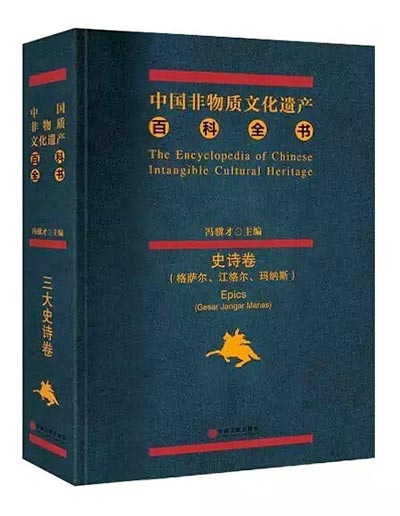Ancient epics offer vivid record of ethnic groups

The Encyclopedia of Chinese Intangible Cultural Heritage
Editor-in-chief: Feng Jicai
Publisher: China Federation of Literary and Art Circles Publishing Corporation
The first volume of the Encyclopedia of Chinese Intangible Cultural Heritage, titled Epics, was unveiled on June 12 in Beijing, and additional volumes Inheritors and Representative Projects will be released in the near future.
The Tibetan Gesar, the Mongolian Jangar and Kirgiz Manas constitute China's three major heroic epics of the nation's ethnic groups. They serve as important carriers of ethnic memories, customs, folklore and religion, compendiums of ethnic history, culture and oral inheritance, as well as testaments to China's cultural diversity and creativity.
The volumes systematically and comprehensively examine the studies on the three heroic epics since the 1950s to demonstrate the two major characteristics of the genre.
First, it looks at epics as an oral art form. It fully explores the connotations and humanistic features of the genre within the context of a range of subjects, such as culture, society, economics, philosophy, religion, military and art. In the volume, various aspects of China's minorities are revealed through wording and pictures. The objective and scientific records of China are conducive to boosting national and cultural confidence.
Secondly, it details the cultural characteristics of the three epics that are distinctive to each ethnic group. Most stories are known in oral form or local dialects, so the primary challenge is faithfully translating them into Chinese. The combination of texts and pictures obtained in field research presents readers with a straightforward account of the ancient epics.
The volume draws upon and absorbs the latest academic achievements in epic studies. It abandons previous academic traditions that simply focus on texts and ignore the subject and context of epic creation. Rather, it makes epics the centerpiece of the ethnic group’s entire oral legacy. As one element of oral art, it is widely linked to other elements in the overall cultural heritage.
In addition, it makes a horizontal comparison among different ethnic groups, promoting academic innovations in terms of the definition of epics, interpretation of texts and description of context. In this vein, the volume is not only complete, informative and easy to read but also is of academic, prospective and normative significance.
The volume follows the tradition of different epics and interdisciplinary approach to categorize and arrange the contents, forming a "harmonious but different" framework and narrative strategies.
Nuobu Wangdan is the deputy director of the Tibetan Literature Division of the Institute of Ethnic Literature at the Chinese Academy of Social Sciences.

 PRINT
PRINT CLOSE
CLOSE